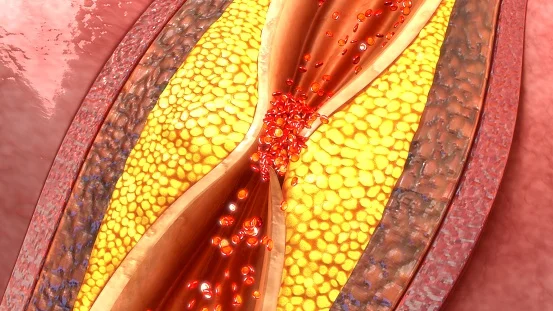
Mechanism of atheroma and infarction (Physiology)
Session summary Atheroma refers to degeneration of the arterial walls caused by fatty deposits leading to restriction of the circulation and risk of thrombosis. Infarction is the obstruction of blood to an organ or tissue, such as the heart. We consider these processes to be a consequence of modern living, but is this true? The mechanisms of atheroma will be explored and some of the medical consequences presented. Learning outcomes At the end of this session you will be able to: Outline the process of atheroma Understand what is meant by occlusive thrombosis, thromboembolism and aneurism Appreciate atherosclerosis as part of the human condition and identify possible compounding factors Understand the different consequences of arterial or venous occlusion Describe myocardial infarction and its consequences Describe types of stroke, ischeamic, haemorrhagic & thrombotic
-
What is an atheroma?
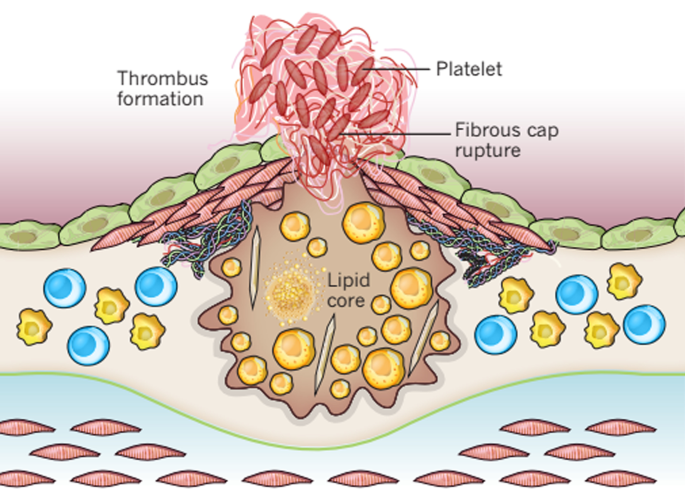
♡ Degeneration of the walls of the arteries caused by accumulated fatty deposits and scar tissue, leading to restriction of the circulation and a risk of thrombosis
-
What is an infarction?
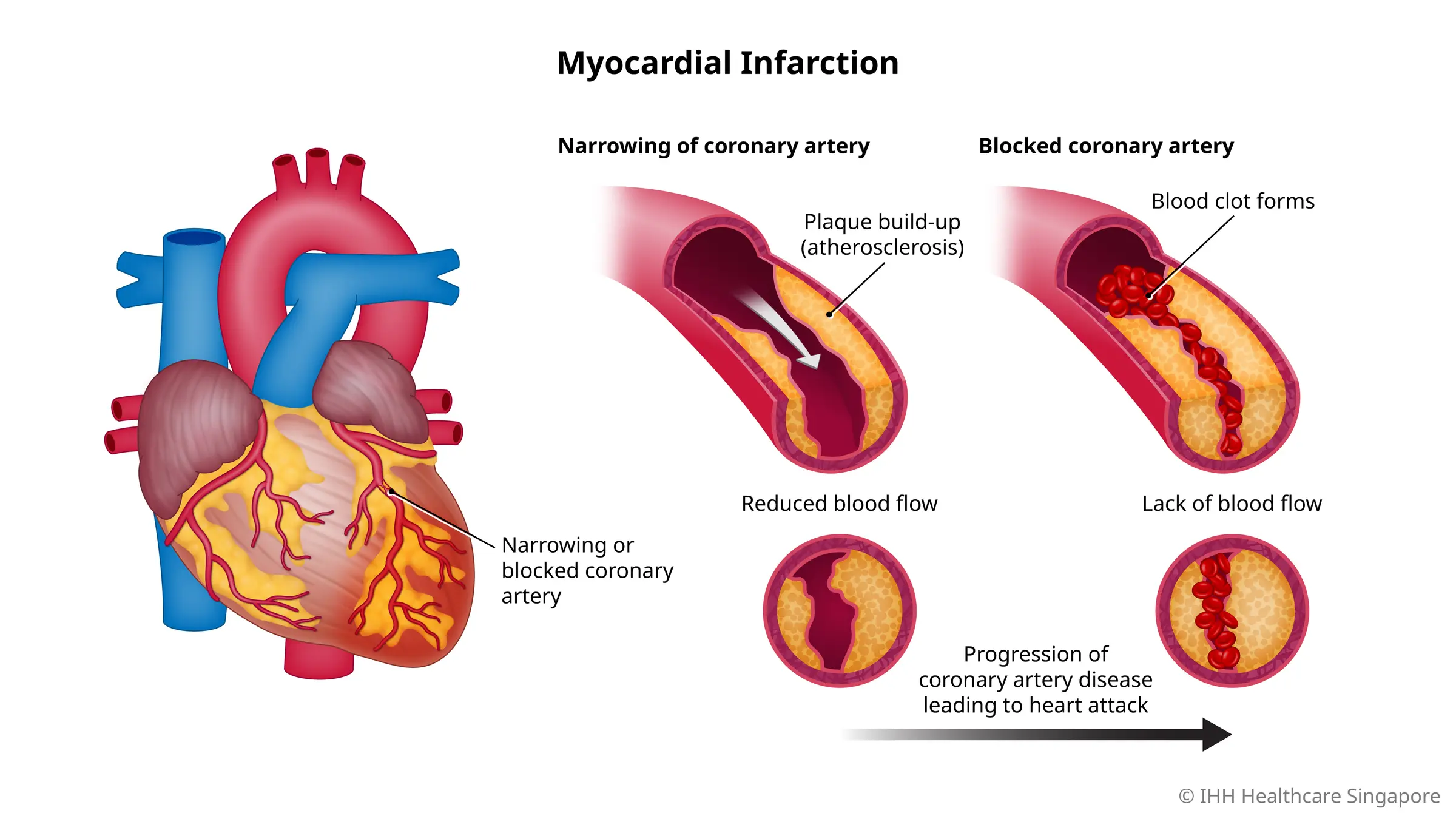
♡ Obstruction of the blood supply to an organ or region of tissue, typically by a thrombus or embolus, causing local death of the tissue
-
How are infarctions formed (in context of lipoproteins)?
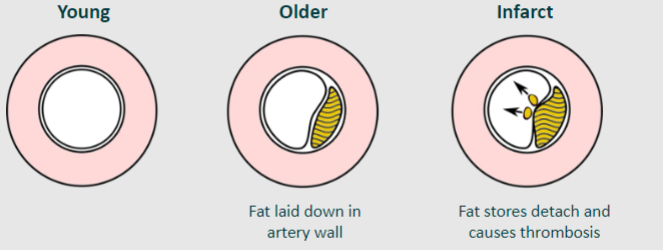
♡ Lipoproteins transfer fats around the body, so they are available to be taken up by the cells via receptor mediated endocytosis
♡ The lipids carried by LDLs include cholesterol, phospholipids, and triglycerides
-
Atherosclerosis and inflammation is complex, what is this inflammation process mediated by?
♡ Mediated by low density lipoprotein (LDL), angiotensin II and various inflammatory substances
-
Where are some common sites (larger arteries) where Atherosclerosis and inflammation occurs (4)
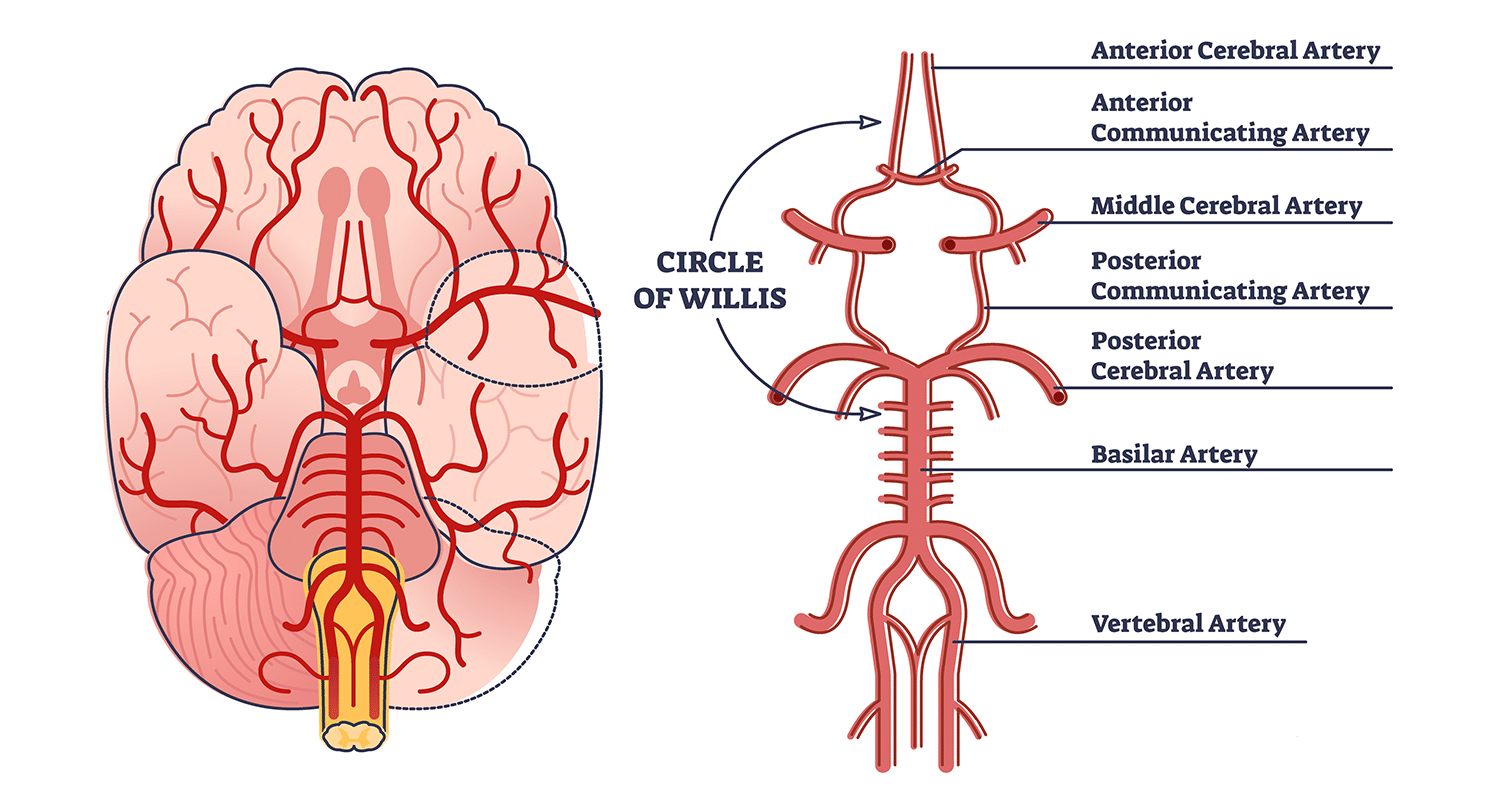
♡ Carotid arteries
♡ Circle of Willis
♡ Coronary arteries
♡ Iliac arteries
♡ Aorta
-
State how inflammation is initiated (4 steps)
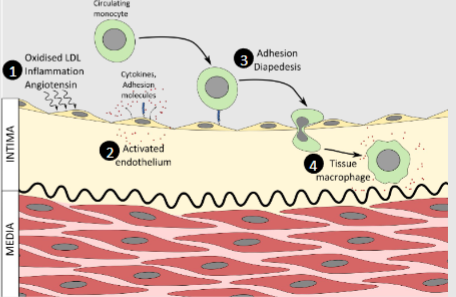
Activation of Endothelial Cells:
Inflammatory triggers activate arterial endothelial cells.
Oxidized LDL particles, stimulated by necrotic cell debris and free radicals, contribute to this activation.
Expression of Inflammatory Signals:
Activated endothelial cells express cytokines and adhesion molecules in response to LDL and inflammation.
Monocyte Adhesion and Migration:
Circulating monocytes bind to the activated endothelium.
These monocytes express adhesion molecules and migrate into the intimal layer.
Differentiation and Mediator Release:
Monocytes differentiate into macrophages within the tissue.
Macrophages release inflammatory mediators, leading to an immune response in the affected area.
-
State how plaque is formed (3 steps)
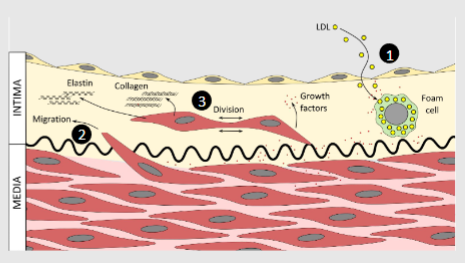
1)
-Macrophages begin to accumulate LDL from the circulation and become foam cells
2)
-Activated foam cells release other growth factors which cause smooth muscle cells to leave the medial layer and cross the internal elastic lamina entering the intima
3)
-The activated smooth muscle cells also release growth factors and may also begin synthesising collagen and elastin in the intima layer
-
State how the plaque matures (3 steps)
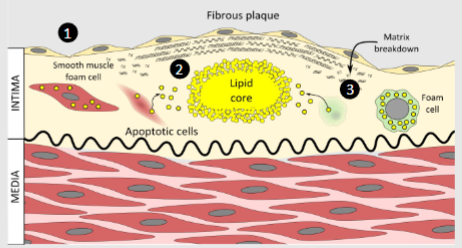
1)
-Smooth muscle cells accumulate LDL becoming a second type of foam cell, but they continue to make extracellular matrix of elastin and collagen which forms a fibrous plaque
2)
-Cells underneath this plaque become oxygen starved they begin to undergo apoptosis and release their fat which forms a globule of fat that is now accumulating in the intima, known as the lipid core
3)
-The dying cells release matrix metalloproteases and other enzymes which can break down the fibrous matrix towards the edge of the plaque leaving a large lipid core covered by a thinner fibrous plaque.
-
Later in life calcium deposits may form around the......
How can this be visible?
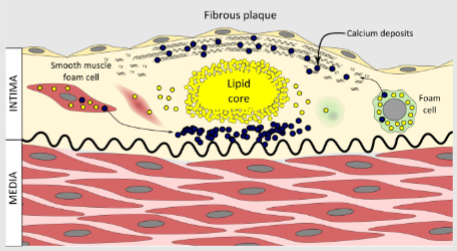
Atheroma
-These are visible on a CT scan
-
What is the role of calcium deposits?
♡ The role of calcium deposits remains uncertain, there have been arguments that calcification may actually stabilise the plaque
-
Is calcium a good or bad thing?
♡ Calcium may be a bad thing, but paradoxically a lot of calcium deposits rather than a few could be a slight advantage.
-
Picture demonstrating how atheroma begins when we are young
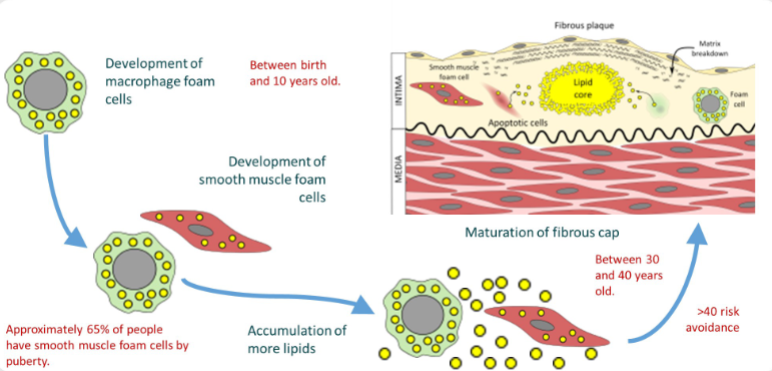
-
How can a plaque rupture occur?
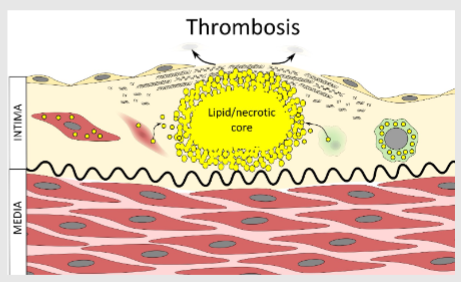
♡ If the central core becomes too large, plaque rupture can occur and the sub-endothelium is exposed. The endothelium is normally an anticoagulant surface
-
Why is collagen useful in this context?
♡ Collagen forms a very good bases for clotting along with other proteins and factors in the intima
♡ This gives us a procoagulant surface in an artery
-
What is occlusive thrombosis?
e.g. Myocardial infarction
-Commonly known as a heart attack, occurs when blood flow decreases or stops to a part of the heart, causing damage to the heart muscle
-
What is thromboembolism?
e.g. Ischaemic stroke
-In this case obstruction due to an embolus from elsewhere in the body (usually carotid artery) blocking blood supply to part of the brain
-Other types of ischaemic strokes occur
-
What does 'Aneurysm due to wall thickness' actually mean?
e.g. Aortic aneurysm
-Cause weakness in the wall of the aorta and increase the risk of aortic rupture
-When rupture occurs, massive internal bleeding results and, unless treated immediately, shock and death can occur
-
State some information about Arterial occlusion?
♡ Particularly cardiac and carotid arteries. Anything downstream from arterial occlusion becomes starved of oxygen
♡ The reduced blood flow can lead to symptoms such as angina on exercise
♡ A thrombus becoming detached can block the cardiac arteries (MI)or cerebral arteries (stroke) and cause death or serious damage very quickly.
-
State some information about Venous occlusion?
♡ We tend to think of it as happening in the legs, but here an occlusion doesn’t cut off the oxygen supply
♡ It will cause pain and swelling, as hydraulic pressure causes oedema
♡ However, a thrombus may detach and return to the right side of the heart and could enter the pulmonary circulation causing a pulmonary embolism
-
Example of a left ventricle that has experienced Myocardial infraction
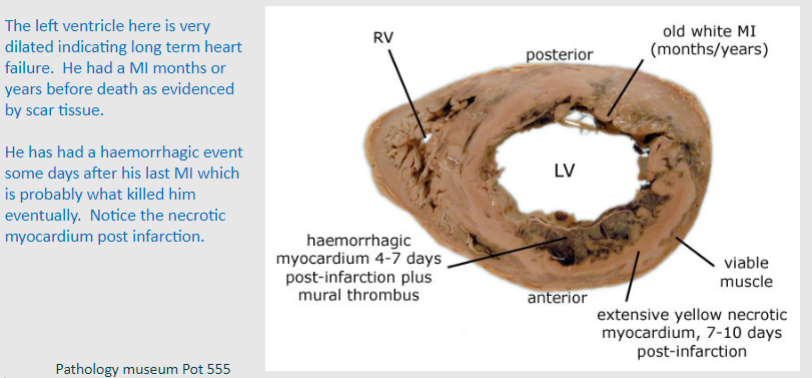
-
What is stable cardiac angina, unstable cardiac angina and myocardial infarction due to?
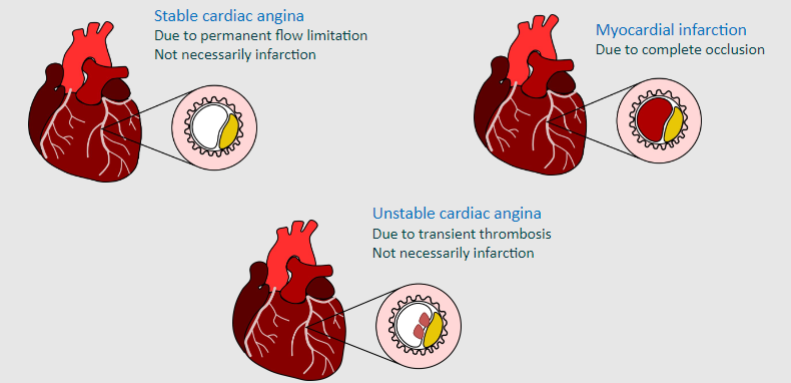
-
What are some complications of myocardial infarction?
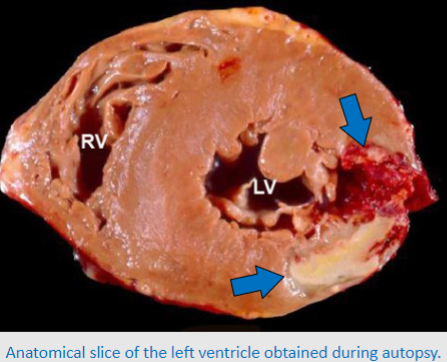
♡ Acute cardiac failure
♡ Conduction problems – arrhythmia
♡ Papillary damage – valve dysfunction
♡ Mural thrombosis - stroke
♡ Wall rupture
♡ Chronic heart failure – myocardial scarring
-
State some information about Strokes due to thromboembolism (Ischaemic)
♡ Thrombus at carotid plaque rupture travels into smaller cerebral vessels
♡ 85% from carotid atheroma rupture, 15% from stasis in left atrium due to arrhythmia
-
State some information about Non-thromboembolic stroke (Haemorrhagic)
♡ Due to hypoperfusion, loss of blood pressure (e.g. heartfailure, haemorrhage, shock), or aneurysm rupture andbleeding in the brain

